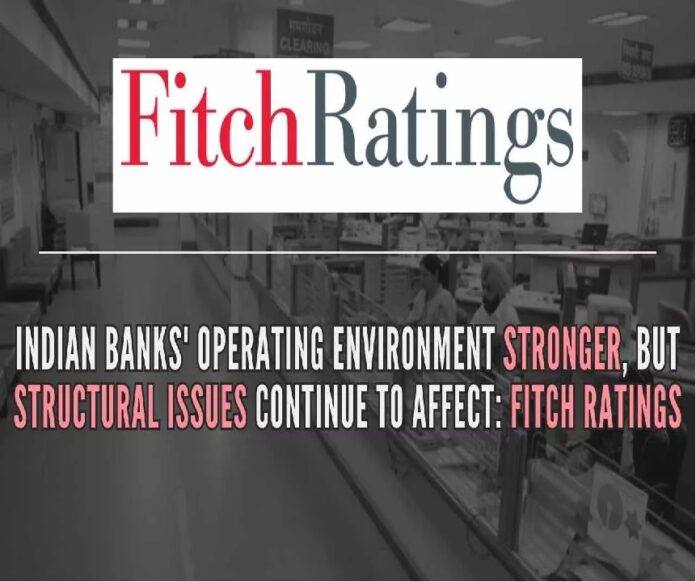Fitch Ratings reports that while the economic risks brought on by the Covid-19 outbreak have diminished, the operational climate for Indian banks has improved.
While increased risk appetite in a comparatively stable operating environment emphasizes the significance of adequate buffers against potential stress, Fitch said that some prudential indicators for the sector have also improved from pre-pandemic levels.
Fitch has upgraded Indian banks’ “operating environment” mid-point score from “bb+” to “bb” in March 2020 after determining that the pandemic was expected to exacerbate the sector’s already-existing OE pressures. The pandemic had a severe impact on India, although the hazards it posed have already subsided.
In May, Fitch confirmed the sovereign’s rating at “BBB-” with a “stable” outlook; as of right now, real GDP growth is predicted to expand by an average of 6.4% per year in the three years leading up to March 2026 (FY23-FY25).
“The overall level of commercial and economic activity has increased considerably. According to Saswata Guha, senior director of financial institutions at Fitch Ratings, “even on the consumer and business sentiment, they continue to be on the increase. It’s crucial to keep in mind that this is taking place as inflation and interest rates are rising.
The strengthening of capital buffers has coincided with a reduction in pandemic-related risks, which is reflected in an increase in the sector’s average common equity Tier 1 (CET1) capital ratio. The ratings agency stated that the earnings buffers “also appear significant,” with operational profits estimated to be 2.8% of risk-weighted assets in FY23, up from 0.6% in FY20.
In FY24, Fitch anticipates some normalization of bank credit growth. However, given the fierce competition, quick loan growth and increased exposure to specific asset classes are also likely to signal more risk appetite, which, if effectively managed, might increase sectoral risk.
According to the ratings agency, India’s private credit/GDP ratio, which is expected to be about 57% in 2022, is already slightly higher than the median for sovereigns in the “BBB” category, which is 50%.
According to Fitch Ratings, the development of a robust bankruptcy structure has been hampered by the exorbitant legal delays. Specialized organizations, such as the bad bank, which was founded in 2021, have not succeeded in their goals, it claimed.
Guha believes that although the financial situation and operating climate for banks have improved, the risk profile for the lenders has not changed.
“Regardless of the financial results, it does not necessarily mean that the risk profile (of banks) has improved. According to Guha, the risk that has been underwritten in recent years has not truly been tested.
S&P Ratings had previously stated earlier in May that it anticipates the profitability of the banking industry to stabilize at a healthy level and that banks’ asset quality will continue to improve.
The ratings agency predicts that Indian banks’ earnings will continue to be strong.
Despite pressure from increased interest rates, the creation of new non-performing loans will remain at cyclically low levels, according to S&P Global Ratings’ Credit Analyst Geeta Chugh. “A recovery in written-off accounts is also boosting the profitability of banks,” she had stated in May.


